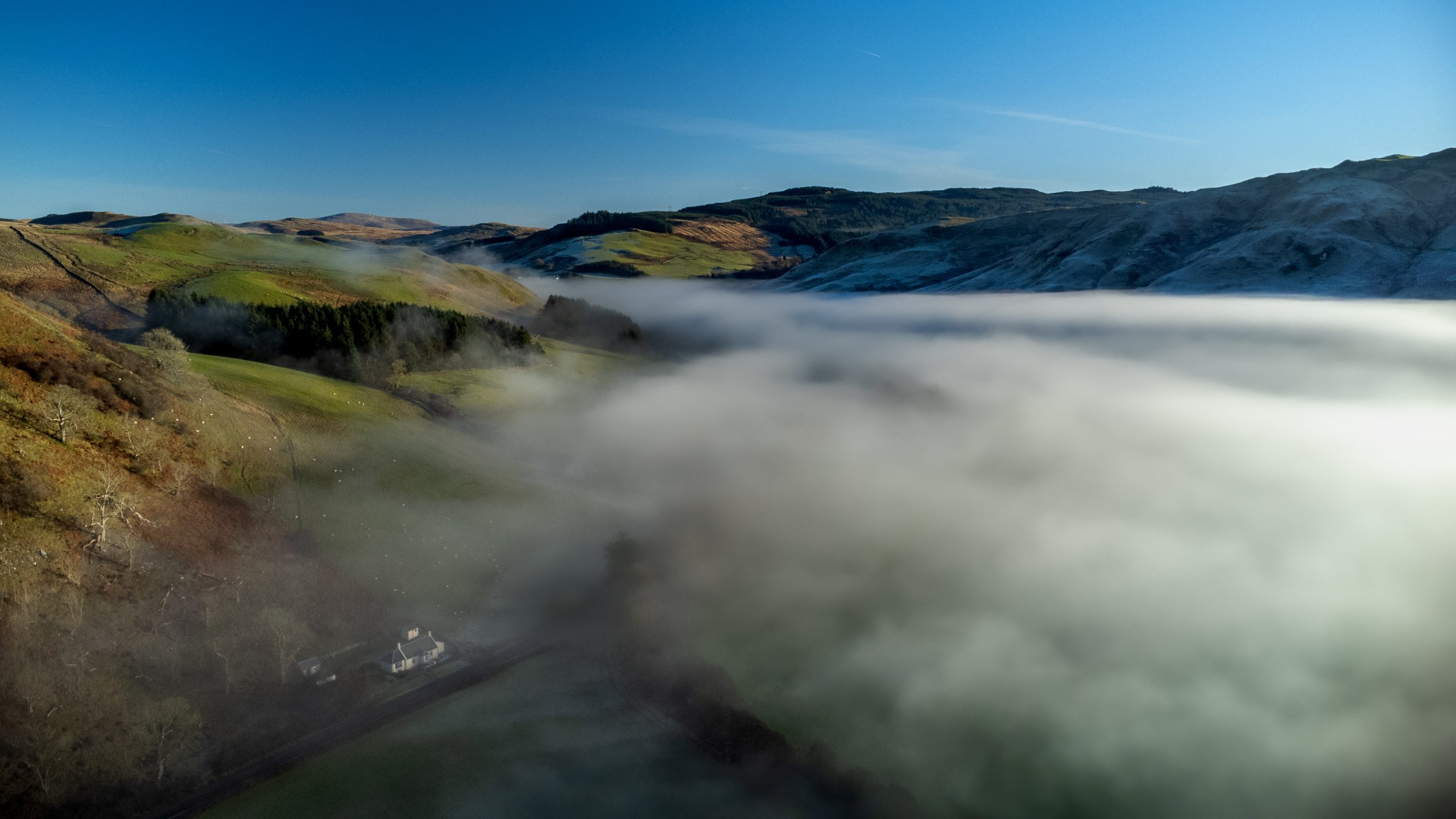River Stinchar
The River Stinchar has its headwaters in the Carrick Forest to the north of the Galloway Forest Park, only one kilometer from the source of the River Girvan.
The Stinchar has a main drainage course of 54km and flows south-west via Barr, Pinwherry and Colmonell, finally entering the sea at Ballantrae.
The river has a catchment area of 314km2, which includes the main tributaries of the Muck Water, the Duisk River, Water of Assel and the Water of Tig. Forestry, hill grazing and agriculture are the main land uses in the Stinchar catchment which has a low human population density and very little industry.
The main stem of the river runs through a relatively low lying valley with tributaries draining steep valley sides. The maximum altitude that salmon can reach naturally is approximately 150m which is much lower than the highest naturally accessible point of the River Ayr which is at 300m altitude.
Water quality in the River Stinchar is generally very good with a diverse range of invertebrates present even in the lower reaches.
The River Stinchar is a famous salmon fishery and is renowned for its autumn run, producing fish which are often large. The Salmon Fishery Board of Scotland Report 1887 notes that the “Stinchar, remarkable for its shifting mouth, and for yielding larger salmon than any river of its size in Scotland“. A 62lb salmon was caught in the coastal nets in 1898.
To view current River Stinchar water levels:

River Stinchar Catchment Map highlighting main tributaries.
Click here to buy a Fisherman’s Map of the River Stinchar
Support us!
Every small donation helps! Payment by credit/debit card is quick and easy.
Key Features
General
- Most rural of Ayrshire river catchments with low human population. Main settlements are Ballantrae, Colmonell, Barr and Barrhill
- Some water is abstracted from the upper reaches of the Stinchar and diverted into Loch Bradan, Ayrshire’s major water supply reservoir. No major man-made obstructions
- Upstream of the Duisk confluence, the Stinchar is known locally as the “Wee Stinchar”
Catchment Characteristics
- The Stinchar is a highly responsive catchment with rapid run-off from the steep valley sides resulting in sudden changes in river flow
- The geology of the Stinchar catchment is relatively uniform and is dominated by sedimentary greywacke. Knockdolian Hill in the lower catchment is formed by a volcanic outcrop and the burns draining this area have a higher pH than those on the opposite side of the river
- The Stinchar has a number of tributaries, the largest of which is the Duisk River which enters the Stinchar at Pinwherry. The Duisk River catchment is extensively afforested. Low pH levels are a feature of many of the Duisk tributaries
Industry
- With no major industry or large sewage treatment works in the catchment, and little intensive agriculture, water quality is generally very good. The river supports large stoneflies such as Perla bipunctata, throughout its length
Biodiversity
- Common fish species include salmon, trout, eels, minnows, sticklebacks and lampreys (sea and brook). The Stinchar is the only one of the major Ayrshire rivers which does not have a stone loach population, adding weight to the argument that it is a non-native fish with its occurrence linked to spread by humans. The Stinchar is a stronghold for eels with a widespread and abundant population. Vendace have been introduced into one of the small lochs in the Stinchar catchment in an attempt to establish a sentinel population for threatened stocks
River Stinchar Gallery
Monitoring and Science on the River Stinchar
Data is collected to allow evidence based management and restoration


























